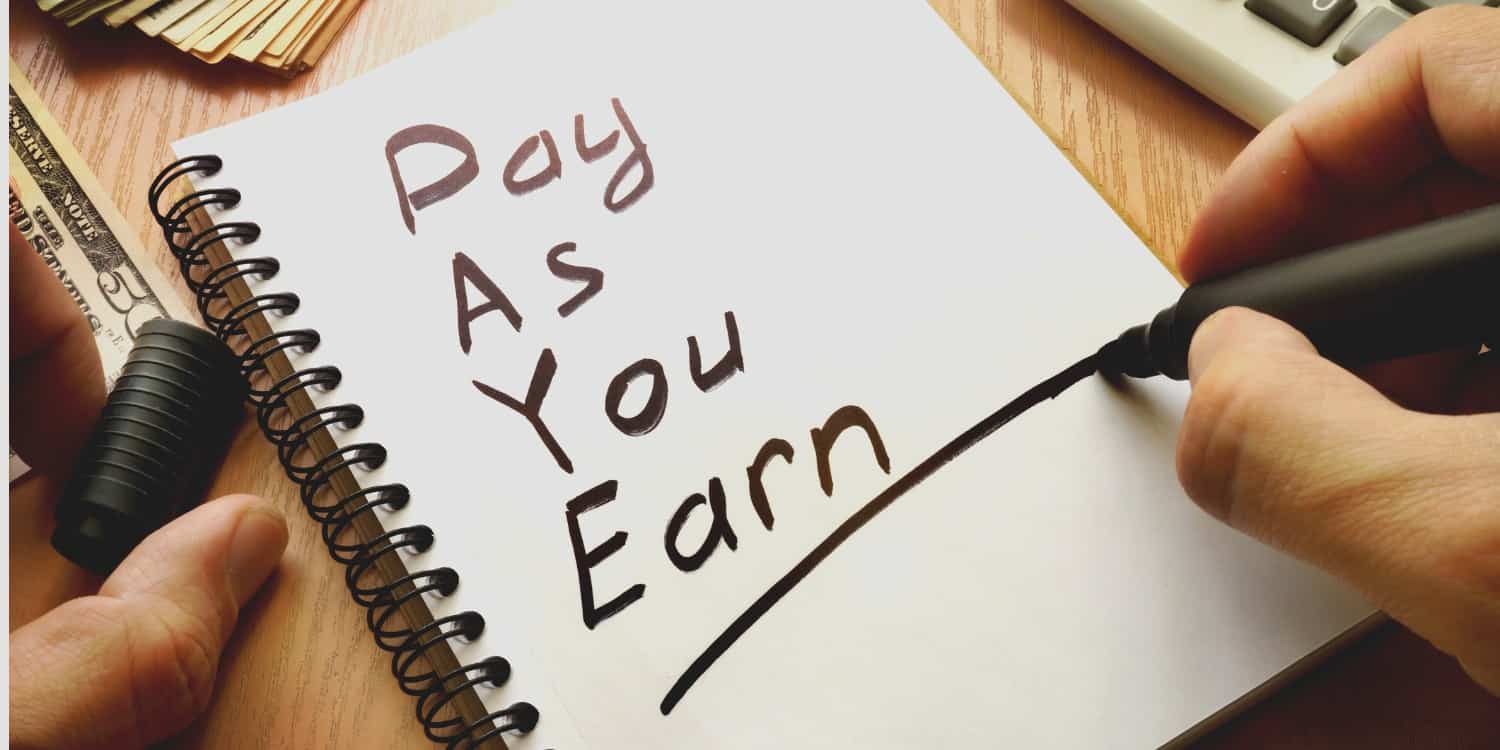Table of Contents
PAYE is an abbreviation of HMRC’s Pay As You Earn system, which employers and pension providers use to deduct personal tax, National Insurance contributions (NIC), and other payments and contributions directly from employees’ salaries or wages before reaching their bank accounts.
These deductions are paid to HMRC, usually every month, so most employers are required to operate the PAYE system through their payroll software.
Do I need to register for PAYE?
You only need to register your business for PAYE if any of your employees or company directors are paid £123 or more a week, get expenses and benefits, have another job, or get a pension. However, you still have to keep payroll records, regardless of whether you need to register for PAYE.
When you register as an employer, HMRC will provide you with a unique PAYE reference number. It is also referred to as an Employer Reference Number (ERN). You will use this on many occasions, including when completing an end-of-year PAYE return.
What is deducted through PAYE?
Before an employee receives their salary or wages from their employer, a number of deductions for PAYE are calculated and made through payroll. These deductions include, where relevant:
- Income Tax
- Class 1 National Insurance contributions
- Pension contributions
- Student and Postgraduate loan repayments
- Payroll Giving donations
- Child maintenance payments
PAYE deductions are based on an employee’s tax code and NI category letter.
Income Tax deductions
Most taxpayers in the UK are entitled to an annual tax-free Personal Allowance, which is currently £12,570 (2024/25 tax year). Any earnings above that sum are subject to Income Tax deductions through PAYE each payday, based on the employee’s estimated annual income:
- 0% Income Tax on earnings up to £12,570
- 20% (basic rate) Income Tax on earnings between £12,571 – £50,270
- 40% (higher rate) Income Tax on earnings between £50,271 – £125,140
- 45% (additional rate) on anything you earn over £125,140
The Personal Allowance reduces by £1 for every £2 of total taxable income above £100,000. This means that the Personal Allowance will be zero for anyone whose annual taxable income is £125,140 or above.
National Insurance deductions
Class 1 National Insurance deductions through PAYE are only made on earnings above the Primary Threshold (PT), which is currently £242 per week (£1,048 per month / £12,570 per year)
This means that most employees pay:
- 8% Class 1 NIC on earnings between £242 (PT) and £967 (Upper Earnings Limit) per week
- 2% Class 1 NIC on earnings above £967 per week
As part of their monthly PAYE bill, employers are also required to pay employers’ National Insurance of 13.8% on employees’ and directors’ earnings above £175 per week.
PAYE deductions are split into equal payments throughout the year. If it transpires that an employee has paid too much or too little Income Tax or National Insurance at the end of the year, HMRC will contact the individual to arrange a refund or request payment of the amount that is owed.
PAYE deductions on pensions
Just like wages and salaries, private and workplace pensions are treated as income and taxed through PAYE each month before being paid to the recipient. However, no National Insurance contributions are due on pensions, provided they are paid from a pension scheme that is registered with HMRC.
Private and workplace pension providers also deduct any tax that a recipient owes on their State Pension. If someone receives pension payments from more than one provider, HMRC will ask one of the providers to deduct tax from the recipient’s State Pension through PAYE.
Are company directors and shareholders paid through PAYE?
Company directors are treated as ‘employees’ of the companies to which they are appointed. This means that their salary payments are taxed through PAYE each payday.
Shareholders, on the other hand, are not taxed through PAYE on their dividend payments. Instead, they must register for Self Assessment and pay dividend tax on this income at the end of each tax year.









